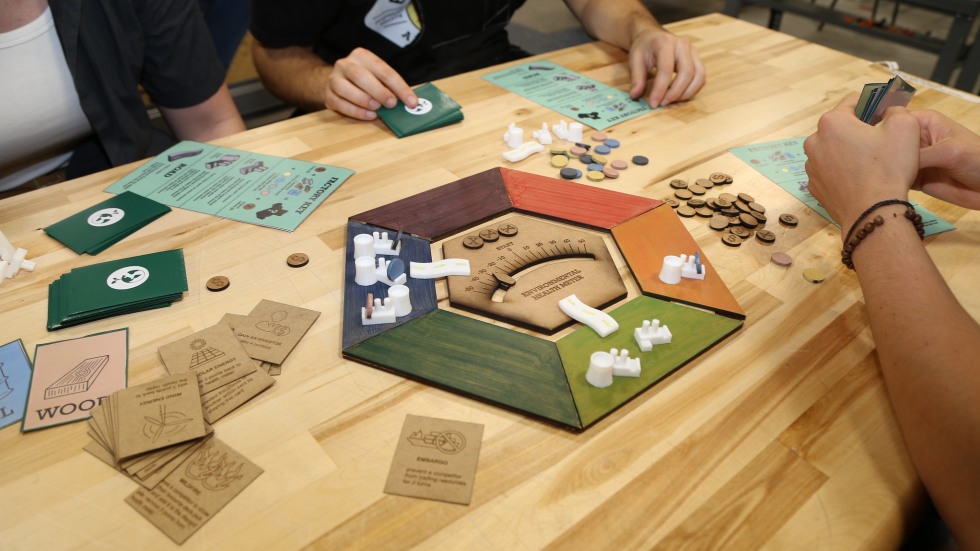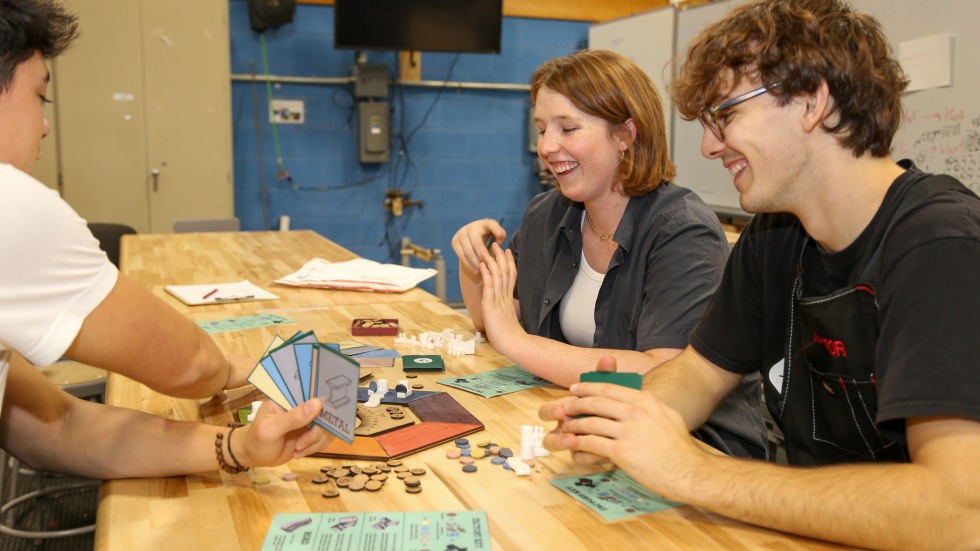When the call for a summer researcher to investigate the gamification of the circular economy, targeted to elementary and middle school students, hit the Slack channel of the Brown Design Workshop managers and monitors, Claire Poissonnier says it took less than six minutes for her to respond. Poissonnier was just getting to know Brown Design Workshop Director and Associate Professor of the Practice Louise Manfredi, and recognized the value a summer spent in her tutelage might bring.
Manfredi has long been an outspoken advocate of the circular economy, a model of production and consumption that aims to reduce waste and extend the life of products and materials. She also had the knowledge and research behind how strategy games had proven popular as a mechanism for science outreach, with multiple board and video games centered on climate change entering the toy market in the last few years.
“Her research focuses on the circular economy and education to change the paradigm. A lot of the work at her former institution was informing the student body about that, but she wanted the research this summer to target younger age groups, with the idea that students of today will be the entrepreneurs and consumers of tomorrow,” Poissonnier explained. “The pitch was to create some sort of gamified representation of the circular economy.”
Manfredi was then able to champion Poissonnier’s nomination for, and acceptance of, a Neil B. Mitchell ’58 award, one of a select number of Brown Engineering undergraduate awards that help provide monetary support for a student in collaborative research with a faculty member. The Mitchell award is specifically tagged for study associated with systems thinking.
As the summer began, the senior engineering concentrator and Brown water polo standout began to review some precedent work, brainstorming her own plans while thinking through the mechanics of a game and the target audience. She decided to go with a board game – based in part on the research that board games are enjoying a resurgence in popularity and that trend is expected to continue. She then connected with junior Jules Silva, a design engineering student who was simultaneously working on a summer Undergraduate Teaching and Research Award. Initially, the plan was to work on separate projects, but the duo relied on each other so much that the final product was a result of the collaborative effort.
Poissonnier met with Manfredi at least once a week, where the mentor offered advice and provided readings and books from her personal bookcase. She was also able to acquire other games for Poissonnier and Silva to test, as well as any needed materials to manipulate as their game board took shape.

